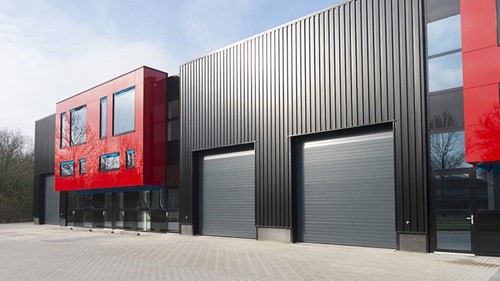7 steps to building $100K in passive income with commercial property
When talking about property investment, most people still gravitate towards the familiar category of residential. Seasoned investors, however, have long been privy to the power of commercial property and have been holding this lucrative world as their best kept secret.
When talking about property investment, most people still gravitate towards the familiar category of residential. Seasoned investors, however, have long been privy to the power of commercial property and have been holding this lucrative world as their best kept secret.
If you’re looking to get started, follow these seven key steps to help you make the right choices where commercial property is concerned, and lead you on your way to growing a passive income that you can live off.
1. Garner an investment mindset
Shifting from a tax-saving mindset to an opportunistic mindset is the number one key to commercial investing and building your $100K passive income.
That’s because an investment mindset will help you achieve larger goals resulting in higher-yielding properties, stronger growth and ultimately more revenue.
For example, negative gearing investors look to save tax versus making more money.
When it comes to investing to build a passive income, this idea of saving tax over profiting cash-flow will hold you back from ever achieving a retirement grade passive income.
But most importantly, an investment mindset will help you set realistic expectations around what you will experience when becoming a long-term commercial property owner.
2. Develop a savings plan to purchase a commercial property
Allow for at least $100,000 as a deposit plus costs to invest in an entry level commercial asset. This $100,000 can be leveraged into a $400,000 commercial property. See table of costs below to purchase an entry level commercial property:
| Purchase price | $400,000.00 |
|---|---|
| Deposit (20%) | $80,000.00 |
| stamp | $13,600.00 |
| building report | $500.00 |
| solicitors* | $2,500.00 |
| Buffer | $3,000.00 |
| Total | $99,600.00 |
*A commercial property worth about $400,000 will produce you $26,000-$28,000 in rental income per annum. And the tenant pays 100% of the property’s outgoings.
The savings plan goal matched with your $100K income goal (or whatever your income goal is) will form the basis of your future investment decisions.
3. Structure your purchases correctly
For this you need a highly skilled accountant who is experienced in commercial property structures. It’s important to know the differences between purchasing in your own name, through a trust and using a company structure.
Different structures will each have their own tax implications, they also can have impacts on your lending. So if you plan to build a large self-sustaining property portfolio, having the right accountancy advice from the get-go is key.
4. Work with a highly experienced commercial mortgage broker
Many residential specialist brokers do not have the same access to good commercial loans as the experienced ones do.
For example, I have seen some brokers obtain 80 percent commercial loans from the same bank from which other mortgage brokers could secure only 70 percent.
It’s also important to have a broker who can find you loans with favourable (and long) terms. This will help with your future serviceability.
5. Buffers are a must
When investing in commercial property, make sure you have buffers in place and purchase quality assets that can be relet. There’s no point chasing high commercial yields if you are purchasing risky assets that create reletting stress if your tenant vacates.
6. Always compare apples with apples
Have a look at the income your deposit can generate for you. In our example below, $600,000 in commercial can generate nearly double the income as $2.1 million cash in residential.
Commercial vs residential returns
| Property | Current value [$] | Total loan [$] | Total LVR [%] | Annual rent [$] | Interest [$] | Rent mgt [$] | Repairs (assumed) [$] | Insurance, water, land rates, etc [$] | Total costs [$] | Pre-tax cash return [$] |
|---|---|---|---|---|---|---|---|---|---|---|
| 3 houses at 4% gross yield (no debt) | 2,100,000 | 0 | 0 | 84,000 | 0 | 5,880 | 6,000 | 14,000 | 25,880 | 58,120 |
| Commercial property (with 70% loan) | 2,000,000 | 1,400,000 | 70 | 160,000 | 49,000 | 8,000 | 0 | 0 | 57,000 | 103,000 |
As you can see, the three houses with a total value of $2.1 million require an eye-watering $2.1 million plus in purchase costs of equity/cash to produce a net annual income of $58,120. Our commercial example, on the other hand, requires the use of only $600,000 plus purchase costs to produce an annual income of $103,000.
7. Employ a strong debt reduction strategy
By using the income from your commercial property’s rent you can pay down the loan over time.
This will allow you as the commercial property owner to pay your debts down to zero in half the time of a standard 30-year loan contract — sometimes even sooner. A high-yielding commercial property can pay itself off in 10 to 12 years.
The high cash flow from the net lease can be so strong that if you can put the surplus rent back into your mortgage or offset account, the debt will rapidly reduce without you having to make any extra payments.
If you have a strong lease in place, you’ll also benefit from the built-in annual rent rises, which will help you pay off the property even faster each year!




















